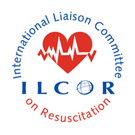Targeted Temperature Management After Cardiac Arrest. Statement by the Advanced Life Support Task Force of the International Liaison Committee on Resuscitation following publication of the HYPERION trial
Andersen LW, Berg KM, Böttiger BW, Callaway CW, Deakin CD, Donnino MW, Drennan IR, Hsu CH, Morley PT, O’Neil BJ, Nicholson TC, Nolan JP, Paiva EF, Parr MJ, Reynolds JC, Sandroni C, Skrifvars MB,
Wang TL, Welsford M, Neumar RW, Soar J.
10 November 2019
Targeted temperature management (TTM) is an active treatment to maintain a specific body temperature target with the aim of improving outcomes in patients who remain comatose after resuscitation from cardiac arrest. Based on two trials published in 2002 showing improvement in favourable neurological outcome when patients were treated with a target temperature of 32-34°C compared to no active temperature control [1, 2], ILCOR recommended the use of TTM, with a temperature target of 32-34°[3]. In 2015, after the publication of a large trial (‘TTM trial’) comparing a temperature target of 33°C with 36°C for patients after out-of-hospital cardiac arrest[4], ILCOR published an updated statement on TTM in adults after cardiac arrest.[5] This 2015 ILCOR statement was based on systematic reviews that included data from the ‘TTM trial’ and made the following treatment recommendations:
We recommend targeted temperature management as opposed to no targeted temperature management for adults with OHCA with an initial shockable rhythm who remain unresponsive after ROSC (strong recommendation, low-quality evidence).
We suggest targeted temperature management as opposed to no targeted temperature management for adults with OHCA with an initial non-shockable rhythm who remain unresponsive after ROSC (weak recommendation, very low-quality evidence).
We suggest targeted temperature management as opposed to no targeted temperature management for adults with IHCA with any initial rhythm who remain unresponsive after ROSC (weak recommendation, very low-quality evidence).
We recommend selecting and maintaining a constant, target temperature between 32°C and 36°C for those patients in whom temperature control is used (strong recommendation, moderate-quality evidence).
While the first recommendation was based primarily on evidence from the two 2002 randomized trials[1, 2] which only included patients with an initial shockable rhythm (i.e. ventricular fibrillation or pulseless ventricular tachycardia), there was no data from randomized trials to support the second and third recommendations which were therefore made based on indirect evidence from the 2002 trials. The fourth recommendation was based on the TTM trial.[4]
Recently, the HYPERION trial was published in the New England Journal of Medicine.[6] In this French trial, 581 adult patients who were comatose after resuscitation from either an in- or out-of-hospital cardiac arrest with an initial non-shockable rhythm (i.e. asystole or pulseless electrical activity) were randomized to either TTM with a target temperature of 33°C or a temperature of 37°C both for 24 hours. The primary outcome (the proportion of patients with a cerebral performance category (CPC) of either 1 or 2 at 90 days after the cardiac arrest) significantly favoured the 33°C group. At 90 days, 29 of 284 patients (10.2%) in the 33°C group were alive with a CPC of 1 or 2, as compared with 17 of 297 (5.7%) in the normothermia group (risk difference: 4.5%; 95%CI: 0.1 to 8.9; P = 0.04). There was no difference in mortality at 90 days (81.3% vs. 83.2%; risk difference: −1.9%; 95%CI: −8.0 to 4.3).
ILCOR welcomes the publication of this important study. Based on preliminary review, this trial does not lead to any immediate changes to the 2015 ILCOR treatment recommendations but reinforces the suggestion to consider TTM, targeting a constant temperature between 32-36°C, in patients who remain comatose following resuscitation from both in- or out-of-hospital cardiac arrest with an initial non-shockable rhythm.
ILCOR is continuously evaluating the evidence related to resuscitation. A review of the evidence with updated TTM treatment recommendations will be published when the results of the TTM2 trial are available.[7] Until then, we encourage clinicians to follow the guidelines set out by their respective councils.
References
1. Bernard, S.A., et al., Treatment of comatose survivors of out-of-hospital cardiac arrest with induced hypothermia. N Engl J Med, 2002. 346(8): p. 557-63.
2. Hypothermia after Cardiac Arrest Study Group, Mild therapeutic hypothermia to improve the neurologic outcome after cardiac arrest. N Engl J Med, 2002. 346(8): p. 549-56.
3. Nolan, J.P., et al., Therapeutic hypothermia after cardiac arrest. An advisory statement by the Advancement Life support Task Force of the International Liaison committee on Resuscitation. Resuscitation, 2003. 57(3): p. 231-5.
4. Nielsen, N., et al., Targeted temperature management at 33 degrees C versus 36 degrees C after cardiac arrest. N Engl J Med, 2013. 369(23): p. 2197-206.
5. Donnino, M.W., et al., Temperature Management After Cardiac Arrest: An Advisory Statement by the Advanced Life Support Task Force of the International Liaison Committee on Resuscitation and the American Heart Association Emergency Cardiovascular Care Committee and the Council on Cardiopulmonary, Critical Care, Perioperative and Resuscitation. Resuscitation, 2016. 98: p. 97-104.
6. Lascarrou, J.B., et al., Targeted Temperature Management for Cardiac Arrest with Nonshockable Rhythm. N Engl J Med, 2019. Oct 2. doi: 10.1056/NEJMoa1906661.
7. Dankiewicz, J., et al., Targeted hypothermia versus targeted Normothermia after out-of-hospital cardiac arrest (TTM2): A randomized clinical trial-Rationale and design. Am Heart J, 2019. 217: p. 23-31.



